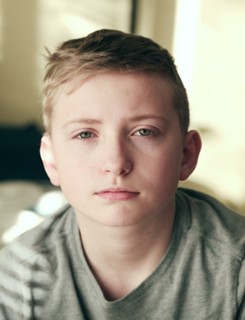Aaron Miller of Clarksville, TN is not only a successful entrepreneur and devoted husband, but also a father of five children. As someone who has balanced a flourishing business with the responsibilities of parenting, he knows that nothing is more important than the safety and well-being of children. In the following article, Aaron discusses the critical signs to look for when identifying child abuse, highlighting how keen observation and timely action can make a life-saving difference.
Child abuse is a tragic reality that affects countless children worldwide. Recognizing the signs of abuse is critical for protecting children and ensuring they receive the help they need. However, identifying these signs can be challenging, as they may be subtle, and children may not always express their distress. Below, Aaron Miller discusses more on the common signs of child abuse, the different types of abuse, and what you can do if you suspect a child is being harmed.
Aaron Ramon Miller on Identifying the Signs
Child abuse encompasses a wide range of harmful behaviors toward children, including physical abuse, emotional abuse, sexual abuse, and neglect. Each has its own set of signs and symptoms. Aaron Miller of Clarksville, TN notes that through understanding the different forms of abuse, you can be better equipped to recognize when a child might be in danger.
Physical Abuse
Physical abuse involves intentionally causing physical harm to a child. This can include hitting, beating, burning, shaking, or otherwise injuring a child. Here are some signs that may indicate physical abuse:
- Unexplained Injuries: Often are bruises, burns, cuts, or fractures that do not have a clear explanation. When noticed, pay attention to patterns, such as injuries that resemble handprints, belts, or other objects.
- Inconsistent Explanations: If a child or caregiver provides inconsistent or implausible explanations for injuries, that could be a red flag.
- Frequent Injuries: Repeated injuries, even if they are explained, may indicate that something is not right.
- Fear of Physical Contact: If a child flinches, cowers, or pulls away from touch, it could be a sign of being harmed previously.
- Wearing Inappropriate Clothing: Children who wear long sleeves or pants in warm weather might be trying to cover up injuries.
Emotional Abuse
Emotional abuse, also known as psychological abuse, involves harming a child’s emotional well-being through verbal assaults, threats, humiliation, or constant criticism. Signs may include:
- Extreme Behavior: Look for extremes in behavior, such as aggression, withdrawal, or excessive fearfulness.
- Developmental Delays: Aaron Miller of Clarksville, TN says that emotional abuse can lead to delays in speech, learning, or social skills.
- Lack of Self-Esteem: Children who are emotionally neglected may exhibit low self-esteem, lack of confidence, or feelings of worthlessness.
- Trouble Forming Relationships: This can make it difficult for children to form healthy relationships with peers and adults.
- Depression or Anxiety: Persistent sadness, anxiety, or emotional distress could also indicate emotional trauma.
Sexual Abuse
Sexual abuse involves any form of sexual activity or exploitation involving a child. It can have devastating and lasting effects on a child’s physical and emotional health. Some of the most common signs may include:
- Inappropriate Sexual Knowledge: Children who exhibit knowledge of sexual behavior beyond their age may be victims of this behavior.
- Sexualized Behavior: Look for inappropriate sexual behavior or advances toward other children or adults.
- Genital or Anal Injuries: Unexplained injuries or infections in the genital or anal area can be signs of harm.
- Sudden Changes in Behavior: These actions can lead to sudden shifts in behavior, such as becoming withdrawn, aggressive, or anxious.
- Fear of Specific People: If a child is excessively afraid of a particular person or location, it could be a red flag.

Neglect
Neglect involves failing to meet a child’s basic needs, such as food, shelter, clothing, medical care, or supervision. Neglect can have severe consequences for a child’s development and well-being.
- Malnourishment: Aaron Miller of Clarksville, TN explains that children who appear underweight, malnourished, or have inadequate food may be at risk.
- Poor Hygiene: Look for signs of poor hygiene, such as unwashed hair, dirty clothing, or body odor.
- Lack of Medical Care: Aaron Ramon Miller notes that neglect can lead to untreated illnesses or injuries.
- Inadequate Supervision: A young child should never be left alone or unsupervised. This is a red flag that may indicate potential neglect.
- Frequent Absences from School: Chronic absenteeism or frequent tardiness could also be a sign.
What to Do if You Suspect Child Abuse
If you suspect that a child is being abused, it’s crucial to act promptly to ensure their safety. First, contact your local child protective services agency or law enforcement immediately if you believe a child is in danger. These professionals are trained to carefully investigate allegations of abuse and can take appropriate action to protect the child.
Keep detailed notes of any signs or behaviors that raise suspicion. Include dates, times, and descriptions of what you saw or heard. This documentation can be invaluable when you report your concerns and during any subsequent investigations. If you’re uncertain about what you’re observing, consult with professionals such as teachers, social workers, or healthcare providers. They can offer guidance on whether your concerns warrant further action and how to proceed.
If a child discloses abuse to you, it’s crucial to respond with empathy and without judgment. Reassure the child that they are not to blame for what has happened and encourage them to speak with a trusted adult or professional. Let them know that they did the right thing by speaking up.
Recognizing the signs of child abuse can be challenging, especially since abuse can take many forms, including physical, emotional, sexual, and neglect. However, by staying vigilant and being informed about these signs, you can help protect vulnerable children. If you suspect child abuse, don’t hesitate to act. Your swift response can make a significant difference in a child’s life, providing them with the safety and support they need to heal and thrive.
Final Thoughts
Child abuse is a devastating reality that affects countless children every year. It is essential for all of us to stay vigilant and understand the signs of abuse to ensure the safety and well-being of children in our communities. Recognizing these signs and knowing how to respond can make a significant difference in the life of a child.
Recognizing child abuse can be challenging, but with awareness and the right information, you can play a role in protecting vulnerable children. By understanding the signs and knowing what to do, you can help prevent further harm and provide a pathway to healing for those affected. Remember, your actions can make a significant difference in the life of a child. If you suspect child abuse, don’t hesitate—be sure to take action immediately. The safety and well-being of a child could depend on it.









